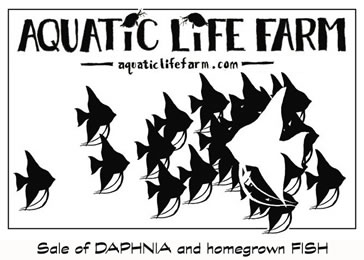Thanks neut for posting the Cichlid News article.
Reading the "Conclusion" section (I can't cut and paste from it) gives the best summary of the current taxonomy of these guys. In a nutshell, A. stalsbergi is a (new) and valid species. A. rivulatus remains a valid species. Scientists and hobbyists disagree over whether "orangesaum" (which can have orange, yellow, or white edging on its fins) is actually one of the species considered synonymous with A. rivulatus (or something new - a "complex" of different species of fish). DNA work will be needed to understand the relationships among these fish...and whether the people working with them have the predilection to lump them into fewer species or split them into many "new" species.
Another good summary of the situation is available from CRC (PLEASE subscribe to Juan Miguel's Site - it's the absolutely BEST resource on cichlids...and will go away without support from folks like us:
http://www.cichlidae.com/docs/membership.php).
In a nutshell, his perspective is that there isn't sufficient evidence to split A. rivulatus into multiple species:
From his profile of A. rivulatus:
http://www.cichlidae.com/gallery/species.php?id=4
Comments: Andinoacara rivulatus had long been considered conspecific with the species described as
A. stalsbergi for the insufficient knowledge or disregard of the characters, which make it now so easy to distinguish between these two species. In other words: nobody knew that the Ecuadorian and Peruvian
Andinoacara were distinct species. When the latter was introduced in the early 1970s, it was identified in accordance with the knowledge of that time as
Aequidens rivulatus.
When the ‘Goldsaum‘ cichlid appeared in the hobby, it was immediately recognized as a distinct species. However, since absolutely nothing was known about its origin, the species remained unidentified and was referred to as
Aequidens sp.. Werner & Stawikowski (1985) were the first to discover, that in Ecuador, from where
Andinoacara rivulatus and all its synonyms have been described, only the ‘Goldsaum‘ occurs. Therefore they concluded that the ‘Goldsaum‘ was
A. rivulatus and the Peruvian ‘Silbersaum‘ an undescribed species.
In more recent years, the identity of
Andinoacara rivulatus has been questioned again. Alf Stalsberg from Norway did collect a slightly different fish in the Rio Esmeraldas drainage. From Kullander‘s identification of this fish as
A. rivulatus and the erroneous assumption that Rio Esmeraldas is the type locality, he has drawn the conclusion that this was the true
rivulatus and the ‘Goldsaum‘ a species of its own. What followed was some speculation, which of the two junior synonyms would apply to the latter, and lately Stalsberg uses the name
Andinoacara aequinoctialis as the valid name of the ‚Goldsaum‘ on his website, which has already been widely adopted by North European aquarists.
However, Schindler & Morgenstern (2010) have demonstrated, that his conclusions are untenable:
(1) When separating
Acara aequinoctialis from
Andinoacara rivulatus, Regan (1905) restricted the latter to the largest of five supposed type specimens, while the four remaining were designated as types of the former. Normally, such an action would have to be regarded as a lectotype designation for
A. rivulata. However, a lectotype can only be selected from syntypes, and we have found out that the specimen in question does not belong to the type series of Günther‘s
Chromis rivulata. Therefore, Regan‘s action is invalid and the four syntypes of
A. aequinoctialis retain their status as syntypes of
Andinoacara rivulatus rendering the former an objective junior synonym, which must not be used for a supposedly different species.
(2) As the type locality is known no more precisely as "Andes of Western Ecuador" (as per title of the original description of
Chromis rivulata), there is no justification for restricting it to the Esmeraldas drainage. Indeed, if the body proportions are really of geographical significance (which has not yet been investigated), the types would better agree with the more southern forms.
(3) It has not been convincingly demonstrated so far, that the ‚Esmeraldas form‘ is really a species distinct from the ‘Goldsaum‘. They differ chiefly in the more slender shape and the color of the fin margins of the former. Differences in the body proportions are expected in such a widespread, ecologically versatile species and may reflect both ecophenotypic and geographical variation. Although populations with exclusively white and orange margins, respectively, have also been observed, this is often a polymorphic character. Specimens with white, yellow or orange-red margins occur in the same habitat (i.e. Werner & Stawikowski 1985). Additionally, such variation is also known from other
Andinoacara.







